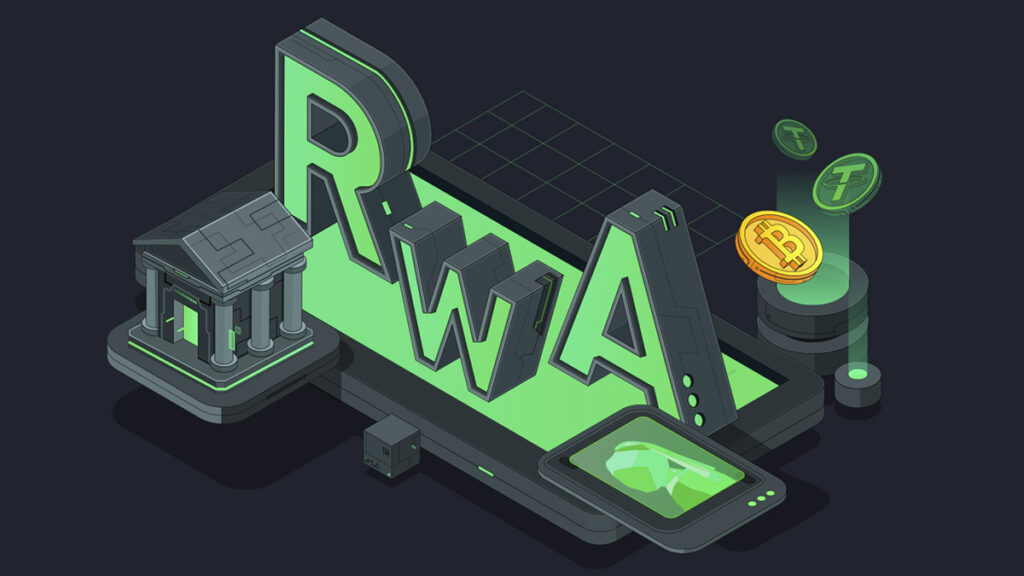Over the previous decade, crypto lovers have witnessed large innovation, from decentralized exchanges to complicated DeFi protocols. However amid the excitement about staking yields and the following altcoin rally, a quieter but arguably extra transformative development is rising: the tokenization of Real-World Assets (RWAs). This innovation might essentially reshape conventional finance and open up new alternatives for on a regular basis traders worldwide.
Whereas merchants speculate on the best presale crypto 2025 may ship, main establishments and blockchain startups alike are constructing infrastructure to tokenize real-world belongings like actual property, equities, commodities, and even high quality artwork. By representing bodily or off-chain monetary devices as blockchain-based tokens, this motion goals to unlock liquidity, cut back entry boundaries, and introduce a brand new degree of transparency into world markets.
What Precisely Is Tokenization?
In its easiest type, tokenization converts the possession rights of an asset right into a digital token recorded on a blockchain. Consider a luxurious condo value $1 million historically, solely rich consumers or giant funds might afford such an funding. But when that condo is tokenized into, say, 1,000,000 tokens, traders might purchase fractional shares value as little as $1.
This idea isn’t restricted to actual property. Art work, music royalties, classic automobiles, gold bars, and even mental property rights may be tokenized. The result’s that belongings as soon as thought-about illiquid and accessible solely to large gamers may be traded peer-to-peer on blockchain networks, 24/7, with minimal friction.
Why It Issues to Traders
The tokenization development addresses a number of ache factors in each conventional and crypto finance:
1. Liquidity for Illiquid Assets:
Tokenization makes it attainable to purchase or promote fractions of a constructing or a uncommon portray on a secondary market. This elevated liquidity can entice extra traders and cut back the time it takes to liquidate positions.
2. World Entry and Fractional Possession:
Anybody with an web connection and a crypto pockets can put money into tokenized belongings, bypassing geographical and regulatory hurdles that historically restrict cross-border investing.
3. Clear Transactions:
Possession data and transaction histories are immutably saved on the blockchain, enormously decreasing fraud and simplifying audits.
4. Automated Compliance:
Good contracts can implement KYC (Know Your Buyer) and regulatory checks mechanically, decreasing overhead prices and errors.
Who’s Main the Cost?
Whereas tokenized belongings might sound futuristic, many credible establishments are already experimenting or launching pilots:
- BlackRock and JP Morgan have each signaled curiosity in tokenized funds and securities, in search of effectivity features and broader investor attain.
- RealT affords fractionalized property possession within the US, letting traders earn rental earnings paid in crypto.
- Securitize helps firms tokenize fairness and debt, issuing digital securities compliant with conventional laws.
- Governments, too, are exploring blockchain for nationwide actual property registries and bond issuances — a robust signal that tokenization is turning into mainstream reasonably than area of interest.
Challenges Forward
In fact, tokenized RWAs should not with out obstacles:
1. Regulatory Uncertainty:
Totally different nations have completely different securities legal guidelines. Whereas tokenization can streamline processes, compliance with native and worldwide guidelines stays a hurdle.
2. Valuation and Worth Discovery:
Whereas a liquid token market is the purpose, skinny buying and selling volumes could make correct pricing difficult, particularly for distinctive belongings like artwork.
3. Custody and Belief:
Even when possession is on-chain, the bodily asset nonetheless exists in the true world. Making certain that the token genuinely represents authorized possession — and that it can’t be double-sold — requires strong custodial preparations and trusted authorized frameworks.
How Tokenization Integrates With DeFi?
Maybe essentially the most thrilling dimension is how tokenized RWAs work together with DeFi protocols. Think about collateralizing a fraction of your actual property tokens to take out an on-chain stablecoin mortgage, with out ever visiting a financial institution. Or utilizing tokenized US Treasury bonds as yield-generating collateral in decentralized lending swimming pools.
This merger bridges the hole between the trillions of {dollars} locked in conventional finance and the borderless, permissionless world of decentralized finance. It might present extra steady collateral for DeFi, diversify yield methods, and entice institutional capital in search of compliance and safety.
Tendencies to Watch in 2025
Trying forward, listed below are three RWA developments that would form crypto finance over the following few years:
1. Regulatory Readability:
Extra governments are crafting frameworks to manage digital securities and on-chain registries. Clearer guidelines will encourage bigger establishments to tokenize larger asset lessons.
2. Institutional Adoption:
Count on conventional asset managers to roll out tokenized funds and bonds, bringing conservative traders into the blockchain financial system while not having them to know complicated wallets or personal keys.
3. Integration With Cellular and Web3 Wallets:
As cellular crypto wallets change into extra refined, they’ll enable customers to purchase, maintain, and commerce tokenized shares, property shares, and commodities alongside their crypto. This seamless expertise will make the transition from conventional brokerage accounts to blockchain-based portfolios almost invisible for the typical consumer.
Ultimate Ideas
Tokenized real-world belongings signify one of the compelling bridges between the previous and new monetary worlds. They unlock liquidity, enhance market participation, and construct belief by way of blockchain’s clear record-keeping.
As at all times, traders ought to do their due diligence, particularly when evaluating platforms that promise fractionalized possession of bodily belongings. Regulatory safeguards are bettering, however cautious analysis stays very important.


